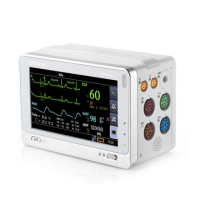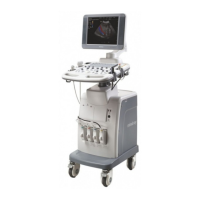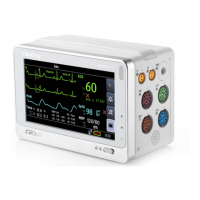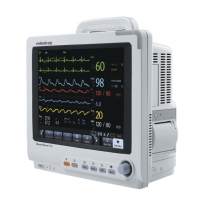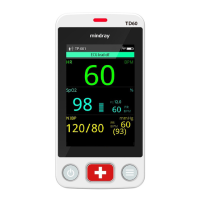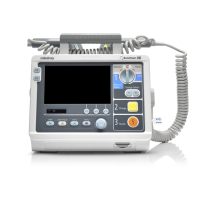Physiological Signal 8-1
8 Physiological Signal
ECG function in the ultrasonic exam (mainly in cardiac exams) is used to display the physiological
signal waves for observing the ultrasonic image synchronously and to locate the ultrasonic image
by time according to the time phase signal provided by this function.
The ECG function is an option.
1. Do not use the physiological traces for diagnosis and monitoring.
2. To avoid electric shock, the following checks shall be performed prior
to an operation:
a) The ECG electrode cable shall not be cracked, frayed or show any
signs of damage or strain.
b) The ECG electrode cable shall be correctly connected.
c) You should use the ECG leads and PCG transducer provided with
the physiological module. Otherwise it may result in electric shock.
3. The ECG electrode cable must be connected to the system first. Only
after the cable is connected to the system, can the patient be
connected to the ECG electrodes. Otherwise, it may cause electric
shock to the patient.
4. Do not place the ECG electrodes directly in contact the patient’s
heart; otherwise it may lead to stop of the patient’s heartbeat.
5. Do not apply the ECG electrodes if the voltage exceeds 15 volts. This
could produce an electric shock.
6. Before using high frequency electric surgical unit, high frequency
therapeutic equipment or defibrillator, be sure to remove the ECG
electrode from the patient, in order to prevent electric shock.
7. Conductive parts of electrodes and associated connectors for ECG
should not contact other conductive parts including earth /
grounding.
8. Frequent trampling or squeezing on the cables may result in cable
break-down or fracture.
9. If an abnormality is detected in physio trace, check that the ECG leads
are properly connected to the system.

